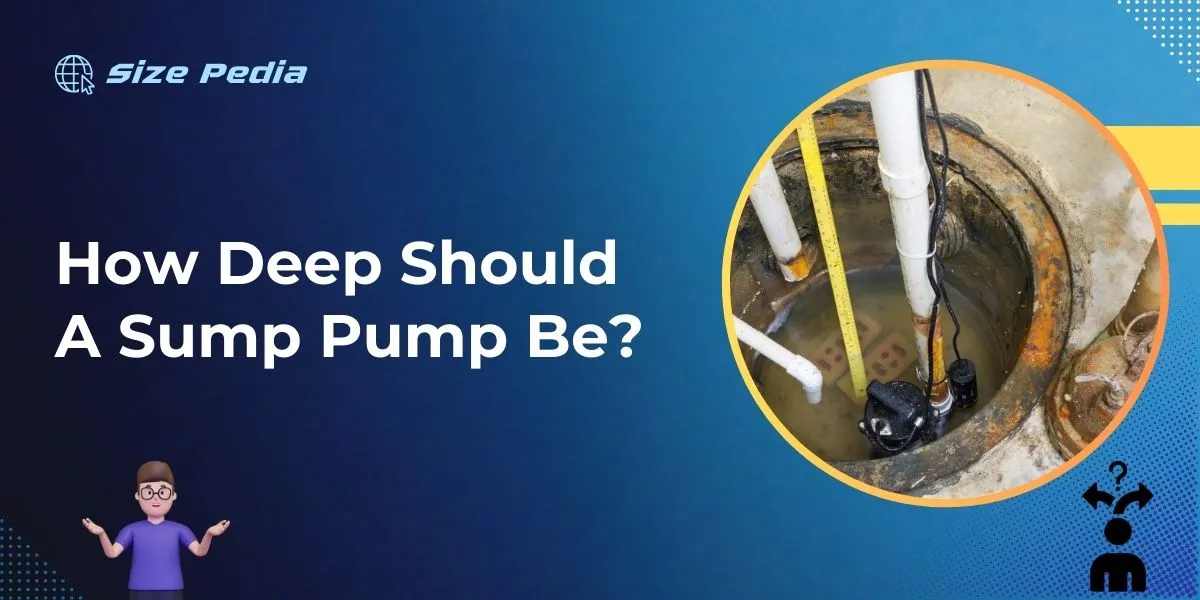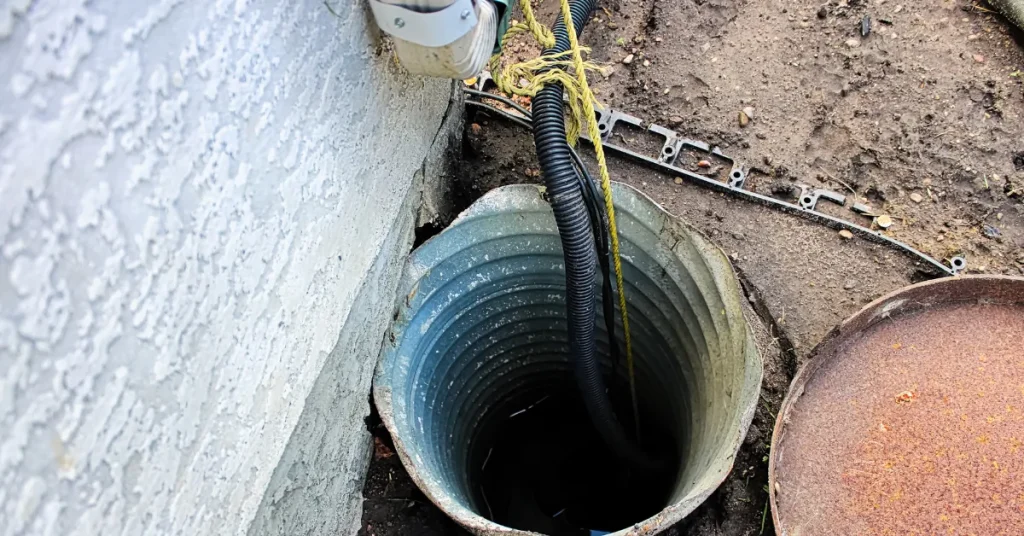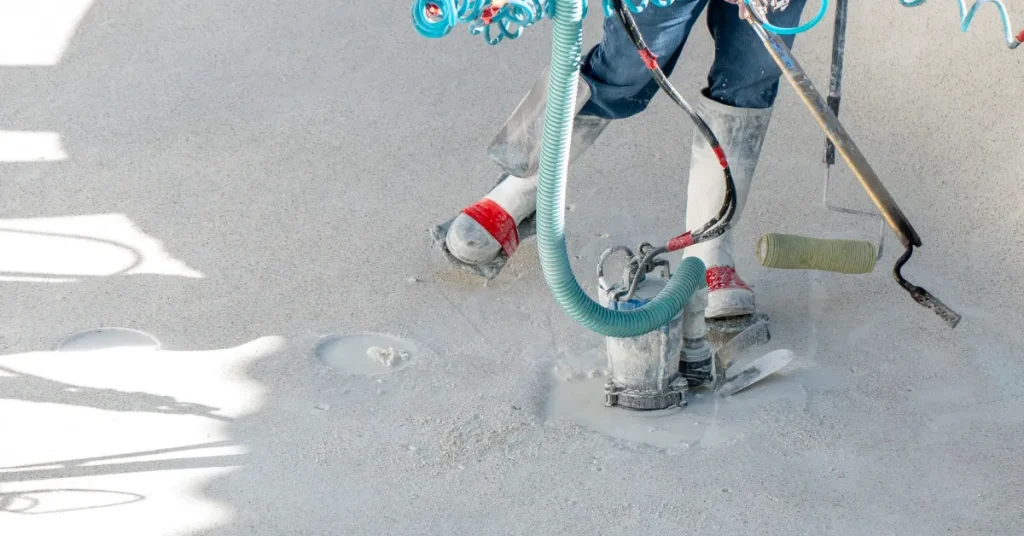A sump pump pit should typically be about 18 inches wide and 22 to 24 inches deep. Proper sump pump installation ensures effective basement waterproofing and moisture control.
A sump pump is a crucial component in maintaining a dry basement and preventing potential water damage.
Ensuring that it is set at the correct depth is essential for optimal performance. The depth allows the pump to engage efficiently before water levels rise enough to cause damage.
Homeowners striving to keep their basements free from flooding recognize the importance of a well-functioning sump pump system.
Selecting the right size and depth of the pump pit can save residents from the headaches of water-related issues, ultimately preserving the integrity of their home’s foundation and the safety of its structure.

The Significance Of Sump Pump Depth
Choosing the correct depth for a sump pump is crucial. It keeps basements dry. It prevents flood damage.
Factors Influencing Sump Pump Placement
The placement of a sump pump matters a lot. Key factors include:
- Basement Size: Larger basements may need deeper sumps.
- Water Table: A high water table means a deeper pit.
- Soil Type: Sandy soils drain faster than clay.
Consequences Of Incorrect Sump Pump Depth
If a sump pump is not deep enough:
- The pump might run too often.
- It can lead to motor burnout.
- It may fail during heavy rain.
If too deep:
- It could cause unnecessary work for the pump.
- It could increase energy costs.
- It might reduce the pump’s lifespan.
Measuring For Success
Ensuring your sump pump sits at the correct depth is crucial for optimal performance. A properly measured sump pit helps prevent basement flooding. This guide will show exactly how to measure the depth of your sump pit.
Tools For Accurate Depth Measurement
Choosing the right tools is the first step to accurate measurement. Here’s what you’ll need:
- Tape Measure: Your main measuring tool.
- Level: For ensuring a straight measurement.
- Notepad: To jot down your findings.
- Flashlight: In case the sump pit area is poorly lit.
Step-by-step Guide To Measuring Sump Pit Depth
Follow these simple steps to measure the depth of your sump pit accurately:
- Secure the Area: Make sure the area around the sump pit is safe and dry.
- Remove the Lid: Carefully take off the sump pit cover.
- Light it Up: Use the flashlight to illuminate the sump pit.
- Measure the Depth:
- Place the end of the tape measure at the bottom of the pit.
- Extend the tape measure to the top edge of the pit.
- Keep the tape measure straight with the level.
- Note the measurement in your notepad.
- Double-Check: Measure twice to ensure accuracy.
- Record Final Measurement: Write down the final, confirmed measurement.
With these steps, you’ll have the precise depth of your sump pit. Your sump pump requires specific pit dimensions to function properly. Always refer to the manufacturer’s recommendations for the best results.
| Sump Pit Size | Recommended Depth |
| Standard Residential | 18 to 24 inches |
| Large Residential | 24 to 36 inches |
| Commercial | 36 inches or more |
The right depth ensures the sump pump activates at proper water levels. It also allows for the evacuation of water before reaching your basement floor. Keep your home safe and dry by measuring twice and installing once.
Ideal Depths For Different Scenarios

When choosing the depth for a sump pump, many factors come into play. It’s not a one-size-fits-all scenario. That’s why understanding ideal depths for different scenarios is crucial.
Whether it’s for a home basement or a large commercial property, the correct depth can mean the difference between a dry and a flooded space.
Residential Sump Pump Depth Requirements
For most homes, a sump pump is the first line of defense against water damage. The depth of the sump pit typically ranges from 18 to 24 inches. The diameter should be around 18 inches.
These dimensions allow the pump to handle the occasional influx of water without being overwhelmed. Here’s a breakdown:
- Minimum Depth: 18 inches – suitable for light water flow
- Optimal Depth: 22 to 24 inches – best for average water tables
Ensure the pit is deep enough for the float switch to operate freely. This prevents the pump from running continuously, which could shorten its lifespan.
Commercial Applications: Going Deeper?
In commercial settings, sump pump needs vary. Larger buildings may require systems with greater capacity. A deeper pit, sometimes exceeding 36 inches, is often necessary.
But depth is not the only factor. Commercial pumps must handle higher volumes of water and debris.
| Building Size | Recommended Depth | Volume Capacity |
| Small to Medium | 24 to 36 inches | Moderate |
| Large Scale | 36+ inches | High |
Ensure commercial sump pits align with local building codes and floodplain requirements. Professionals should assess the area’s water table and potential flood risk when determining the necessary pump depth.
Installation Best Practices
Installation Best Practices for sump pumps are crucial for waterproofing efforts. The right depth and correct installation are fundamental. Only this ensures a dry basement and a long-lasting pump.
Here we discuss essential techniques and tips that guarantee an effective sump pump system.
Ensuring Proper Sump Pump Fit
To ensure a sump pump performs well, selecting the correct basin size is essential. The pit should be deep enough to allow the pump to cycle on and off without rapid frequency. This helps to avoid motor burnout.
Typically, a sump basin measures eighteen to thirty inches in depth. The diameter should be no less than eighteen inches. This spacing allows for the accommodation of the pump’s float switch and operational components.
Tips For Professional Sump Pump Installation
- Start with a Clean Pit: Remove all debris and gravel from the pit. This prevents clogging and wear on the pump.
- Check the Manual: Always follow the manufacturer’s guidelines for installation specifics.
- Test the Check Valve: Ensure the check valve is in place and functioning. This stops water from flowing back into the pit.
- Secure the Pump: The pump must sit on a solid surface. Avoid dirt or sand at the bottom of the pit.
- Seal the Lid: Airtight lids keep out moisture and pests and reduce pump noise.
- Drill a Relief Hole: Drill a hole below the check valve. This prevents air lock in the discharge line.
- Route the Discharge Line: The line must lead away from the house. Water should not pool around the foundation.
- Test Run: Fill the pit with water to ensure the pump starts and stops correctly.
Maintenance: Keeping Your Sump Pump Optimal

Maintenance plays a crucial role in ensuring your sump pump’s longevity. Keeping your sump pump operational involves regular check-ups and fine-tuning. Proper maintenance keeps it ready for action, especially during heavy rains and floods.
Regular Check-ups And Adjustments
To maintain peak performance, scheduling regular check-ups is vital. These include:
- Cleaning the sump pit of debris and mud.
- Testing the pump by pouring water into the pit.
- Inspecting the power cord and float switch.
Take note of any strange noises or irregular cycling. Such signs could indicate a need for adjustments or repairs. This could involve:
- Adjusting the float for optimal water level detection.
- Ensuring the check valve is operating correctly.
- Verifying the discharge line is free of blockages and freezes.
Dealing With Depth-related Issues Over Time
Over time, your sump pump might face depth-related issues. Proper depth is key for efficient operation. As your sump pit naturally accumulates sediment, regular cleaning becomes essential. Look out for:
- Excessive sediment build-up reducing the pump’s effectiveness.
- The need to adjust the depth of the pump as the pit changes shape.
Periodically, readjust the pump’s position in the pit. By doing so, ensure the pump remains at the correct depth for triggering the switch accurately. Correct sump depth also prevents motor burnout.
Case Studies: Depths That Made A Difference
Getting the depth right for your sump pump can prevent costly disasters. Real-world scenarios highlight the importance of proper sump pump installation. Below, dive into cases showing the difference the right depth can make.
Examples Of Successful Sump Pump Installations
Perfect depths lead to dry basements. Homeowners benefit from expertly gauged sump pit depths.
- House A – A 22-inch deep pit in a high water table area. Result: No flooding for 10+ years.
- House B – Depth of 18 inches in a moderate moisture area. Outcome: Basement dry as a bone.
- House C – Installed at 24 inches deep in a flood-prone zone. Success: Basement saved during heavy storms.
Lessons Learned From Suboptimal Depth Choices
Errors in depth can lead to water woes. Let’s explore what we can learn from these missteps.
- Home D – Only a 12-inch pit. Issues: Overworking pump, frequent malfunctions.
- Home E – Pit too deep at 30 inches for area’s needs. Troubles: Unnecessary strain on the motor.
- Home F – Depth not accounting for soil type. Result: Repeated basement seepage.
FAQs About How Deep Should A Sump Pump Be
What Is The Ideal Depth For A Sump Pump Pit?
The ideal depth for a sump pump pit is typically 18 to 24 inches. This depth allows for adequate water collection without excessive cycling of the pump. Proper pit depth ensures efficiency and extends the pump’s lifespan.
Can Sump Pump Depth Affect Performance?
Yes, sump pump depth can significantly affect performance. Too shallow a pit may cause frequent cycling and burnout, while too deep can lead to unnecessary work for the pump. Optimal depth balances workload and durability.
How To Determine Sump Pump Pit Size?
To determine the correct sump pump pit size, consider the area’s water table, the basement’s square footage, and potential inflow. A typical pit measures 18 inches wide and 22 to 36 inches deep. Consult a professional for the best sizing.
Does Deeper Sump Pit Mean Better Water Management?
Not necessarily. A deeper pit can handle more water but might be overkill for drier areas, leading to infrequent cycling and sediment accumulation. Optimize the depth based on your specific water management needs.
Conclusion
Selecting the proper depth for your sump pump is crucial for effective water management. Aim for at least 18 inches deep and 24 inches across for optimal performance.
Regular maintenance will ensure reliability when it matters most. Trust in the right setup to keep your basement dry year-round.
Resources:
1. https://basc.pnnl.gov/resource-guides/drain-or-sump-pump-installed-basements-or-crawlspaces
